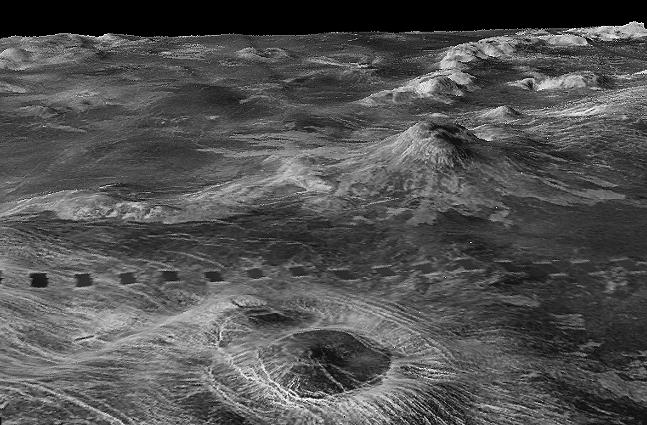J.T.K. wrote:I spoke about the video not the zipped files...

For good reasons, Celestia offers to get rid of the clouds with a click (I-key), in order to have an unobstructed view of the surface! For curious people who have no idea what the surface of Venus looks like, this info is definitely instructive.
And so why do it ?
I find this NASA PhotoJournal image for example very worthwhile:

[Three-dimensional perspective views of Venusian Terrains composed of reduced resolution left-looking synthetic-aperture radar images merged with altimetry data from the Magellan spacecraft.]
My personal reservations are rather due to the fact that radar mapping has possibly a quite different interpretation from photographic surface imaging! More precisely: Radar images are
black -- where the surface is
smooth, and reflects the radar signal away from the spacecraft,
and
white -- where the surface is
rough (on the radar scale of 12.5 cm), and backscatters the radar signal;
Furthermore, your quoted cloud image,

is NOT what the eye would see! It has been taken
in UV light by Pioneer Venus Orbiter, at wavelengths strongly absorbed by sulfur compounds in the atmosphere. This technique strongly enhances patterns in the clouds caused by upper atmospheric winds.
The view of Venus in visible light looks MUCH more dull and far less colored:

That's also how Venus looks in my (fairly big) telescope...
More 12 Go, it's so waste of space

for most of celestia users...
I am quite sure that you are simply wrong here. A principal strategy of the Celestia Devs has always been to visualize the Universe as closely as possible to reality (i.e. with unaided vision). Whether YOU like that or not. Since its start in 2002, Celestia has been downloaded from SourceForge
more than 10 million times..This great success may well be viewed as a confirmation of our basic philosophy

Fridger





